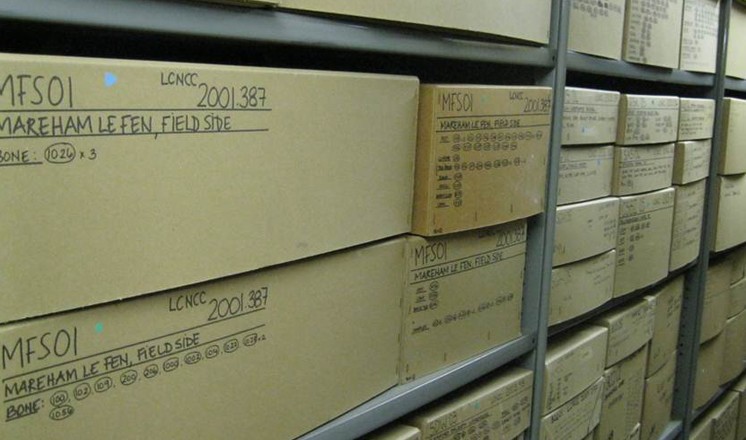3D Scanning at The Collection’s Archaeology Store
RSS FeedSeveral trips have been made to the museums archaeological store, to view and scan an extensive and substantial range of artefacts kept in storage. Maggie and I have achieved numerous scans on a variety of artefacts, all trips to the store have been successful and rewarding. One day visiting last November, we completed over ten scans, concentrating specifically on the stonework on the lower floor of the store. Stonework artefacts are extremely heavy to manoeuvre and move, several people had to work as a team when moving such items.
Scanned items included…
Bailgate Milestone, Bardney Abbey Table Leg, Crowland Column, Digby Cross Shaft, the Font, Fragment of Shrine of Little Saint Hughs, Malandry Grave Slab and the Newland Column base.
These can all be viewed as STL files on the Lincoln 3D Scans website [url=http://lincoln3dscans.co.uk/]http://lincoln3dscans.co.uk/[/url]
Thursday 24th January is our first time back to the store after Christmas and the New Year. On this morning trip, Maggie and I concentrated specifically on scanning ceramics. This experiment began with 3D scanning two ceramic items in store; the first object we scanned was of the Bronze Age found in Canwick. The second ceramic belonged to the medieval period and retrieved from Toynton Allsaints. The scanning technology on textured ceramic worked exceptionally well over the whole of the items scanned, picking up a large amount of detail. We both agreed this was due to the amount of visible detail marked upon the surface of the ceramics, as the scanner found enough detail to track when creating the 3D image. This end result was a direct copy of the artefacts in both shape and detail.
By Laura Ince
3D Scanner Intern
Comments
There aren’t any comments for this blog yet

